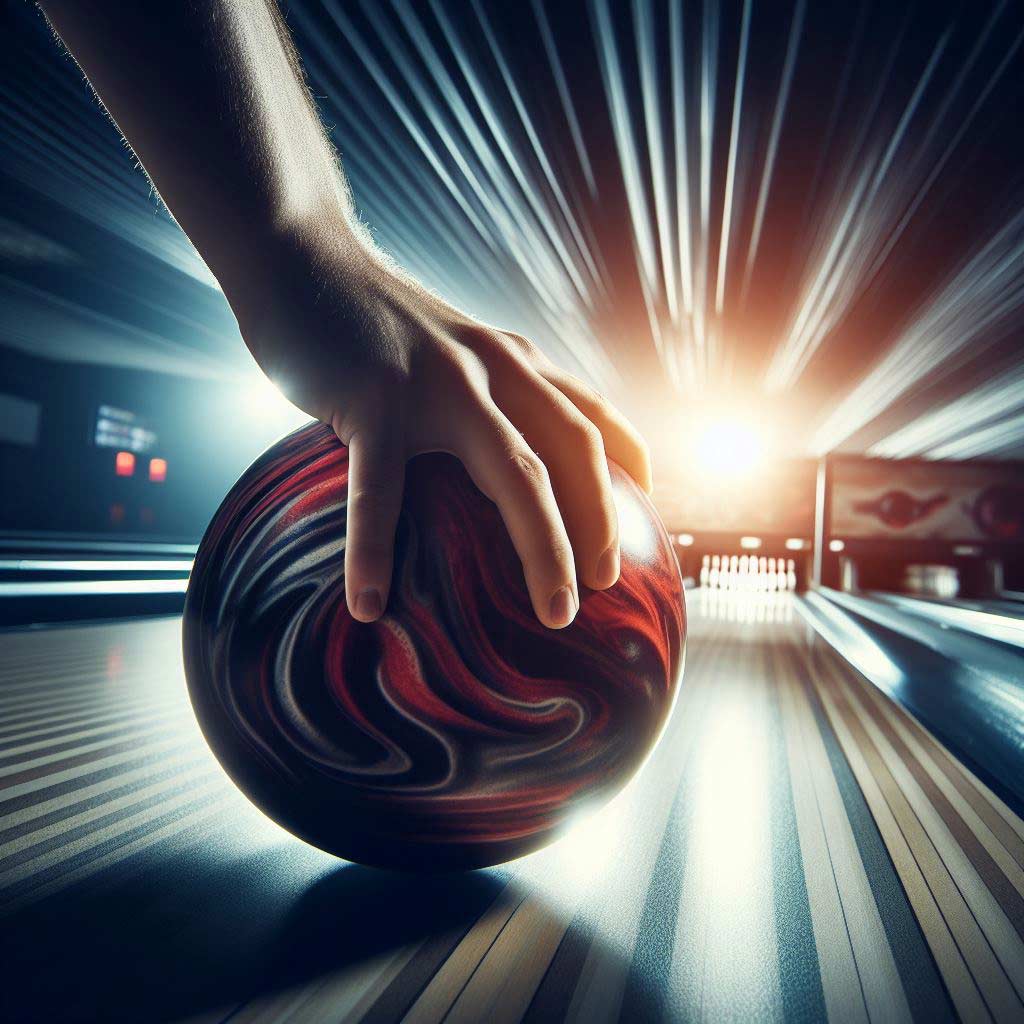Bowling ball speed is one of the most important metrics in professional and competitive bowling. The speed at which a bowler can throw the ball has a huge influence on pin carry, striking power, and scoring ability. But just how fast do the top professionals throw?
In this in-depth article, we’ll examine the average bowling ball speeds of professional and elite bowlers.
You’ll learn about the techniques the pros use to generate speed, explore the factors that contribute to throwing faster, and see how recreational bowling ball speeds compare.
By the end, you’ll have a full understanding of bowling ball velocity at the sport’s highest levels.
What Is Considered a Fast Bowling Ball Speed?
Before diving into pro numbers, it’s helpful to level-set on speed ranges. Bowling balls generally fall into these categories:
- Slow – Less than 12 MPH
- Moderate – 12-15 MPH
- Fast – 16-19 MPH
- Very Fast – 19+ MPH
Of course, these are not strict cutoffs. But broadly speaking, recreational and amateur bowlers average in the moderate speed range. Getting above 16 MPH generally requires advanced skill and technique.
Elite professional bowlers take things to another level. The very best in the world can reach speeds of 22 MPH or more! But even on the competitive pro tours, averages tend to be around 16-17 MPH during tournaments.
Let’s take a closer look at the data…
Average PBA Tour Bowling Ball Speeds
The Professional Bowlers Association (PBA) Tour hosts the top events in competitive bowling around the world. The athletes on tour are the best of the best when it comes to bowling skill, power, and consistency.
Across PBA tournament events, the average bowling ball speed is around 17 MPH. However, there is a fair amount of variation between different bowlers’ top speeds.
Some pros have recorded peak throws surpassing 22 MPH in competition. Yet others excel more with precision and accuracy in the 16-17 MPH range.
Generally, the faster bowlers leverage cranking power styles, while slower speeds favor control and consistency.
But regardless of individual throwing speeds, the PBA touring pros are in a different league compared to even accomplished recreational league bowlers. Very few casual athletes can come close to reaching the 17 MPH average among professionals.
Highest Recorded Pro Bowling Ball Speeds
While 17 MPH is the general average, some bowlers can truly uncork jaw-dropping fastballs. Who are the speed demons cranking out the fastest shots?
Here are some of the highest bowling ball speeds recorded in professional tournaments and events:
- Sean Rash – 22.3 MPH
- Osku Palermaa – 22.1 MPH
- Jesper Svensson – 21.8 MPH
- Kyle Troup – 21.5 MPH
- Dom Barrett – 21.4 MPH
- Jason Belmonte – 21.2 MPH
- EJ Tackett – 21.1 MPH
Rash, Palermaa, Svensson, and Troup are known as some of the fastest throwers and “crankers” in the sport. They can routinely hit over 21 MPH on their hardest shots.
But bowling speed is far from everything. All-time greats like Jason Belmonte and EJ Tackett also rank among the fastest pros, while excelling at accuracy, power, and versatility.
Nonetheless, the velocities these elite players can generate are truly remarkable compared to recreational athletes. Very few average bowlers could come anywhere close to 21+ MPH without years of focused training.
Factors That Influence Bowling Ball Speed
What enables pro bowlers to reach such fast bowling ball speeds? There are several key factors at play:
Bowler Strength and Fitness Level
Generating high ball speed requires full-body power and athleticism. Elite bowlers train extensively to build strength and explosiveness in their arms, legs, core, and all muscle groups.
Greater fitness translates directly into faster throws and more pin action. Stronger pros can also maintain their peak ball velocities deeper into tournaments and long seasons.
Specific Bowling Style
Certain bowling forms and release styles naturally lend themselves to producing faster throws:
- Cranker Style: This power technique unloads massive momentum into the swing. Cranker pros like Sean Rash use strong legs, big backswings, and rip upward through release to maximize ball speed.
- Tweener Style: This balanced approach blends power and control. Belmonte and Tackett exemplify fast tweener styles.
Strokers focus more on control and accuracy at slightly lower speeds. But elite strokers still average around 16 MPH.
Ball Composition and Coverstock
The bowling ball itself has a major role in velocity. Different ball surfaces and reactive coverstocks transfer energy more efficiently into the pins. Higher-end balls optimized for power hook can pick up extra speed out of the bowler’s hand.
Lane Conditions and Oil Patterns
Oil patterns also influence ball motion. Shorter oil lengths constrain the hook phase, forcing the ball to slow down less as it heads into the pins. This allows elite bowlers to maintain higher speeds at the critical point of impact.
Release Techniques
How the bowler releases the ball affects its velocity. A fast, clean release with proper thumb exit, roll, and follow-through enables the highest possible ball speeds.
Pros fine-tune their release motions for maximum efficiency and power transfer into the swing. This generates greater striking force at higher velocities.
Takeaway: Mastering various physical and technical elements enables pro bowlers to reach their fastest potential ball speeds.
Profile of The Fastest Bowlers on Tour
The bowlers capable of the absolute fastest shots in competition rely on a combination of raw power, refined technique, and optimal equipment. Here’s a profile of two of the undisputed speed kings on the PBA Tour:
Sean Rash
- Peak Speed: 22.3 MPH
- Style: Major cranker
- Strengths: Pure power, high rev rate, optimal launch angle
With the fastest throw ever recorded in competition, Sean Rash has built his career on raw cranking speed. He unleashes one of the most powerful deliveries in bowling history.
Rash uses an aggressive approach to work his large 6’3” frame into the lane. He positions his shoulders early and blasts the ball upwards with incredible arm strength and force.
Osku Palermaa
- Peak Speed: 22.1 MPH
- Style: Two-handed cranker
- Strengths: Leverage, timing, ultra-high backswing
As one of the early innovators of two-handed bowling, Osku Palermaa has developed one of the most unique and effective speed techniques on tour.
He uses the added hand to achieve extra-high backswings for maximum power generation. Palermaa also excels at creating leverage and torque with his approach, shoulders, and release.
Both Rash and Palermaa can combine elite fitness, unconventional techniques, and precise timing to produce record-setting ball speeds topping 22 MPH.
How Can Bowlers Increase Ball Speed?
Even if reaching 22 MPH seems out of reach, many bowlers still want to improve their velocity for greater power and pinfall. Here are some of the most effective methods for increasing bowling ball speed:
Improve Strength Training
As noted above, a bowler’s overall fitness directly enables faster speed. Targeting muscle groups in the legs, core, shoulders, and arms with weight training and resistance bands will translate into mph gains.
Refine Approach and Slide Step
The steps of a bowler’s approach set the tempo and power potential for their swing. A fast, dynamic slide foot plants the momentum to unload at maximum speed into the release.
Keep Shoulders Square
Maintaining proper shoulder alignment during the swing is crucial for efficiency. Squaring up avoids energy-sapping twists before release.
Drive Hard Through Release
The final drive of the swing and follow-through determines the ball’s output speed. Driving the thumb firmly upward and avoiding deceleration generates greater velocity into the lane.
Use Proper Wrist and Hand Positions
For maximum speed, the fingers should be under or slightly to the side of the ball. The wrist stays firm and straight until the release point for optimal energy transfer.
Takeaway: With training and refined techniques, most bowlers can achieve 1-3 MPH speed gains or more over time.
The Importance of Speed Consistency
Of course, bowling fast is only one piece of the puzzle. Controlling speed and achieving consistent ball velocity are equally crucial for scoring and accuracy.
Elite pros like Jason Belmonte intentionally vary their speeds based on lane conditions and pin reaction. Higher speed is not always the best answer.
Finding the optimal speed for the scenario and hitting the same velocities shot to shot demonstrates true mastery. This blend of power, control, and consistency separates the top professionals.
Recreational Bowlers – Improving Ball Speed
For casual and amateur league bowlers seeking to improve, remember that increased ball speed happens gradually over time. Here are realistic tips to add velocity:
- Get a new reactive resin ball designed for power. This can pick up 1-2 MPH instantly.
- Work on slide step tempo and properly timed release. This develops momentum.
- Build finger and wrist strength. Avoid squeezing the ball at release.
- Improve fitness with strength exercises for the core and upper body.
- Use visualizations of the swing path and release. Focus on driving through the throw.
- Ask local pro shop staff for drilling and fit advice to maximize your power potential.
- Refine mechanics with coaching rather than muscling more speed at the expense of technique.
With practice and training, recreational bowlers can gain several mph on their fastball to take their bowling abilities to the next level.
But remember that consistency and control are just as crucial in the long run. Strive to become a great overall bowler, not just someone throwing for speed.
The Takeaway on Pro Bowling Ball Speeds
Elite professional bowlers make throwing a 16-pound ball at 20+ MPH look effortless. The top athletes on the PBA Tour can hit peak speeds from 18 up to 22 MPH and above.
But the average pro still sits around 16-17 MPH in competition. Recreational amateurs generally operate between 8-15 MPH in their leagues and casual play.
There are many factors enabling pros to generate such fast bowling ball speeds consistently. Raw strength and fitness, mechanics, release technique, and proper equipment optimization all play key roles.
While reaching the 20+ MPH range takes immense skill, amateur bowlers can still add velocity to their games with practice. Improving speed happens incrementally over time by focusing on strength, technique, and consistency.
So while we marvel at the power of pros like Sean Rash and Osku Palermaa, know that throwing faster is within your grasp. With smart training and dedication to sound mechanics, every bowler can inch closer to joining the speed elite.
Frequently Asked Questions
How fast do pro bowlers throw it?
The average pro bowling ball speed is around 17 mph. However, elite pros can reach peak speeds of over 22 mph. The fastest bowlers on tour like Sean Rash and Osku Palermaa have exceeded 22 mph in competition.
How do pro bowlers bowl so fast?
Pro bowlers generate high ball speeds through strength training, proper technique, and optimized equipment. A fast, controlled approach, high backswing, and driving through the release all enable power. Two-handed styles also create leverage for extra speed.
How fast should a 13-year-old bowl?
13-year-olds just beginning competitive bowling should aim for 8-12 mph. With training and technique development, 13-year-olds can reach 12-15 mph speeds within their first year. But consistency, control, and accuracy are more important than speed alone.
How many mph does a bowling ball go?
Bowling balls generally travel between 8-22 mph depending on the bowler. Professionals average around 17 mph, while casual amateur speeds are 8-15 mph. With training, recreational bowlers can gain 1-3 mph or more over time.
How do you increase the speed of a bowling ball?
Improving strength, optimizing timing, using faster bowling balls, driving through release, and maximizing swing height are effective ways to increase bowling ball speed. Even small gains of 1-2 mph come from focused practice.
Who did the fastest ball in cricket history?
The current record for fastest ball in cricket history is held by Shoaib Akhtar, who bowled a 161.3 km/h (100.2 mph) delivery in 2003.
Is it better to bowl fast or slow?
There are benefits to both fast and slow bowling speeds. Slower enables greater control, while faster creates power. Elite bowlers can strategically vary speeds while maintaining consistency. Using the optimal speed for conditions is key.
Why can’t I bowl fast?
Common reasons recreational bowlers struggle to generate high ball speed include poor fitness, flawed technique, inferior equipment, and insufficient swing momentum. But with practice and coaching, most can achieve gradual speed gains over time.
Can anyone bowl fast?
While some natural ability helps, anyone can improve their bowling ball speed through proper training and technique work. But speed should not come at the expense of accuracy, control, and bowling fundamentals. Consistency ultimately matters more than pure velocity.





